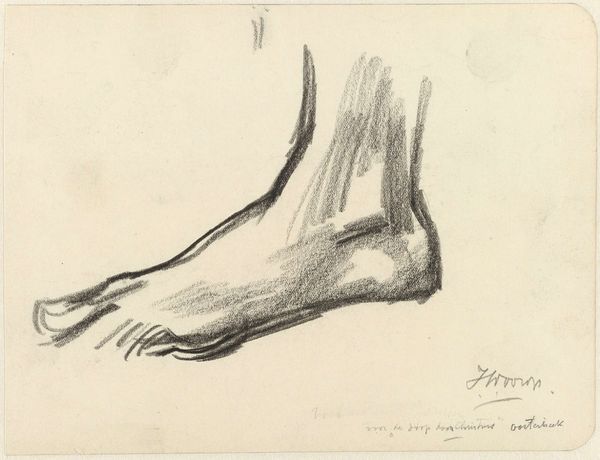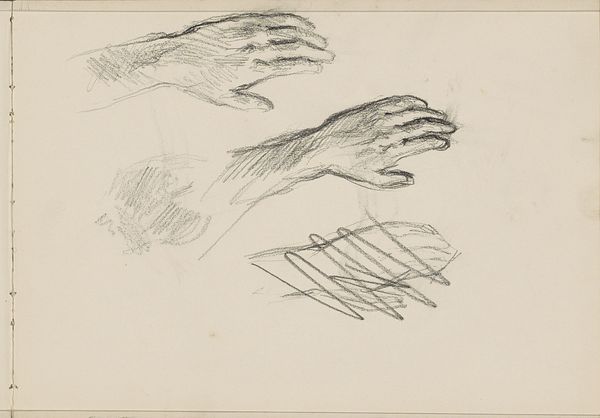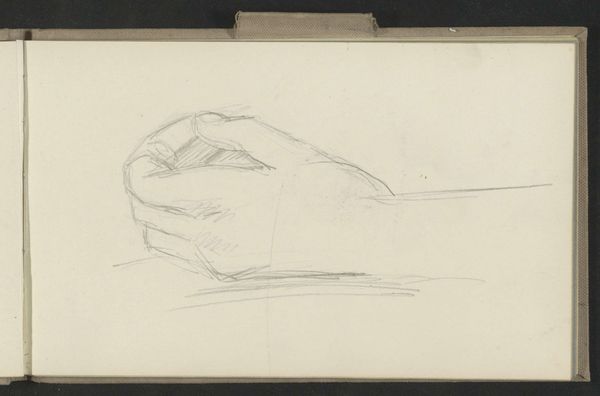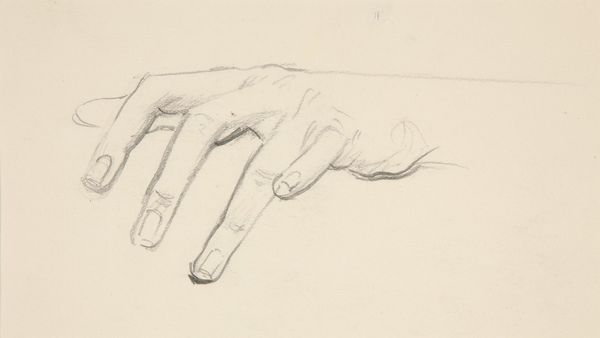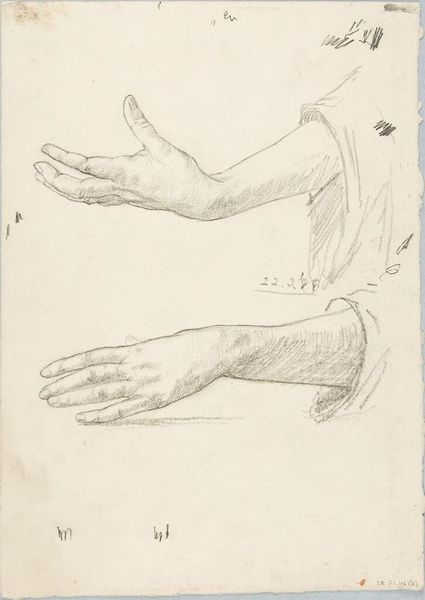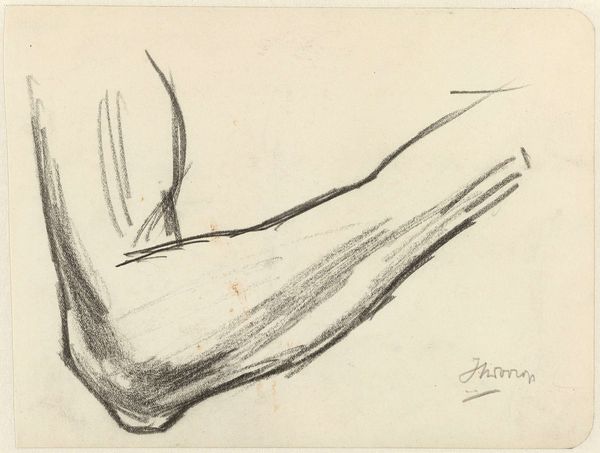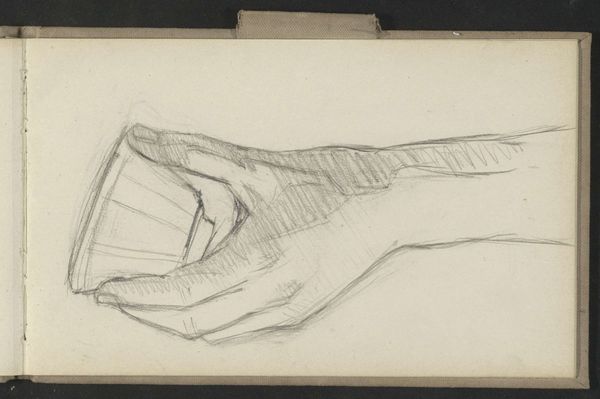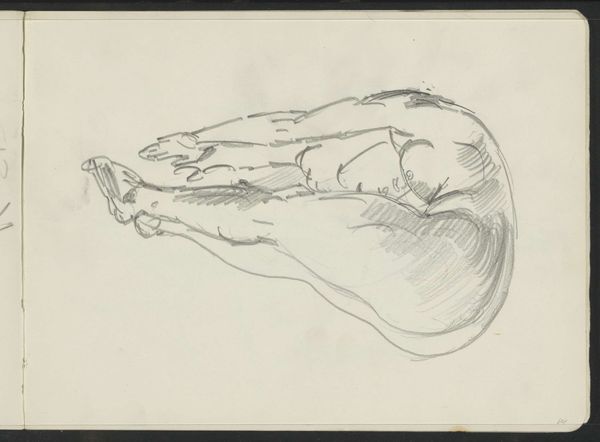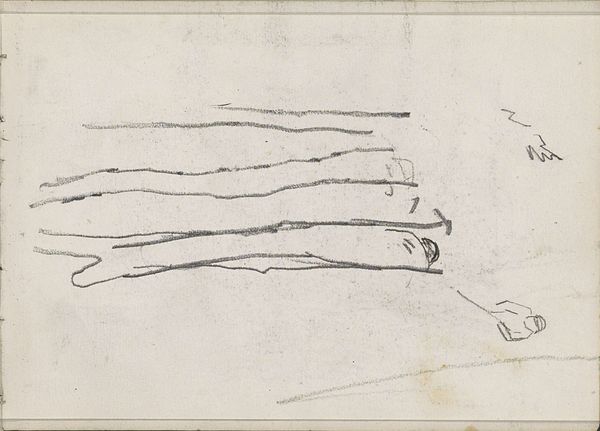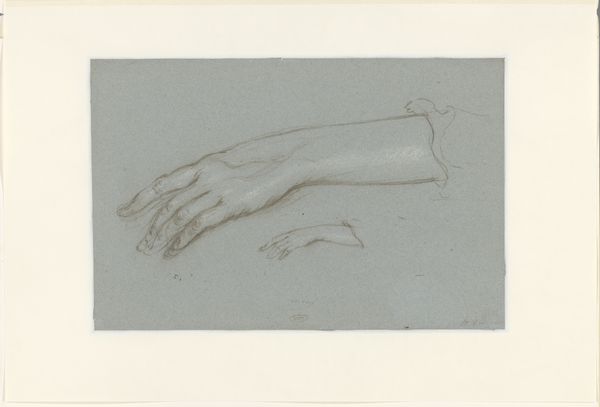
drawing, pencil
#
portrait
#
drawing
#
amateur sketch
#
thin stroke sketch
#
quirky sketch
#
shading to add clarity
#
incomplete sketchy
#
figuration
#
form
#
personal sketchbook
#
idea generation sketch
#
pen-ink sketch
#
pencil
#
line
#
sketchbook drawing
#
initial sketch
Dimensions: height 195 mm, width 148 mm
Copyright: Rijks Museum: Open Domain
Curator: Before us is "Studie van een onderarm," or "Study of a Forearm," attributed to Jan Toorop, dating from between 1868 and 1928. It's currently housed here at the Rijksmuseum. What are your initial thoughts? Editor: Striking, isn't it? Simple, almost raw. There’s a definite vulnerability in that outstretched hand. It’s caught in this odd sort of in-between space that feels isolating, almost imploring. Curator: It’s rendered in pencil, which really lends itself to that sense of immediacy and a very palpable, visceral feel of the human body at work. The paper itself becomes a critical component here. Editor: Absolutely. And to me, the historical context amplifies this vulnerability. Was Toorop grappling with larger issues of human labor? The piece compels us to reflect upon whose hands we’re not seeing in typical artistic spaces. Who is never deemed suitable to portray in art? Curator: An interesting point. While Toorop moved across Symbolist and Pointillist styles, and his drawings reveal the artist’s deep study of anatomy and his masterful control of line and shading. The physicality of the hand itself becomes the central focus. It's more about Toorop’s exploration of form and line. Editor: But can we really separate form from its potential to evoke specific cultural narratives? This arm, rendered with its specific musculature and sketched lines, might easily reference the toiling hand in an age when artistic depictions mostly immortalized members of nobility. The very medium, the accessibility of pencil drawing, seems to democratize the artistic process. Curator: Perhaps it’s both. It's an interesting dialectic, and tension: his personal exploration meets our communal projection of meanings onto the form. Editor: Yes. And for me, I find its power in how that seemingly straightforward artistic study still manages to be suggestive and, indeed, powerful, within those broader social and political dialogues. Curator: A compelling point. It speaks to how even the most rudimentary forms in art can hold multifaceted meanings.
Comments
No comments
Be the first to comment and join the conversation on the ultimate creative platform.
